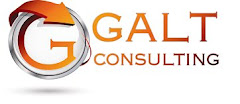
by Don Harkey
I have been reading a book recently called "Run with the Bulls Without Getting Trampled" by Tim Irwin. Irwin shares a story early in the book about his son who had just played in a very close football game. It was his last game in high school and they had lost in the playoffs. Irwin embraced his son on the field and held the big kid, who was sobbing uncontrollably. His face and body was covered with sweat, mud, and bruises.
Then the opposing team's coach approached the two men. "Sir, may have a word with your son?", the coach of the winning team asked. The father stepped back and coach grabbed the son's shoulders and said softly, "Son, tonight you left nothing on the field. You gave it your all, and it was an honor to play against you."
Isn't this the way we should all live our lives? Too often we are afraid to truly commit ourselves to our internal purpose because of our own fears. Rather than risk failure or discomfort, we make decisions that are "safe" rather than follow God's calling. We were all placed on Earth by our Creator with our own Strengths and our own experiences to try to find a life that is fulfilling and meaningful.
The noise of the world begins to cloud our vision of what makes us fulfilled. We begin to hold great value in things like security or high definition television sets or job titles.
I knew a manager of a major company who once told me that he once had great dreams for his company, but that he had long decided to keep those dreams to himself until he could get promoted to a level where he could make a difference. I asked him what that level was and what changes he would make. He paused and looked very sad. "I have forgotten and I will likely never reach that level anyway." This was a man who had risen to high levels in the company and was very respected. Inside, he was a broken man. It was one of the saddest things I have ever seen.
The saddest part, was that he didn't even have the strength or courage not to warn others. Instead, his advice was to follow his path. Keep quiet. Take the safe road. Live for the next game, or maybe the one after that.
The story shared by the author reflects an important lesson. While we are here in this game of life, we must work every day to leave nothing on the field. This is not just the way to live a fulfilled life, it is a basis of morality.
God doesn't call us to be comfortable. He doesn't call us to be respected or admired. He doesn't call even call us to be successful... but He does call and we must listen.
That boy felt great pain that night on the football field. However, for the rest of his life, the boy, now a man, never regretted that day. Live your life so that you don't regret this day, or any other.
“It is not the critic who counts; not the man who points out how the strong man stumbles, or where the doer of deeds could have done them better. The credit belongs to the man who is actually in the arena, whose face is marred by dust and sweat and blood, who strives valiantly; who errs and comes short again and again; because there is not effort without error and shortcomings; but who does actually strive to do the deed; who knows the great enthusiasm, the great devotion, who spends himself in a worthy cause, who at the best knows in the end the triumph of high achievement and who at the worst, if he fails, at least he fails while daring greatly. So that his place shall never be with those cold and timid souls who know neither victory nor defeat.”
- Teddy Roosevelt







.bmp)




